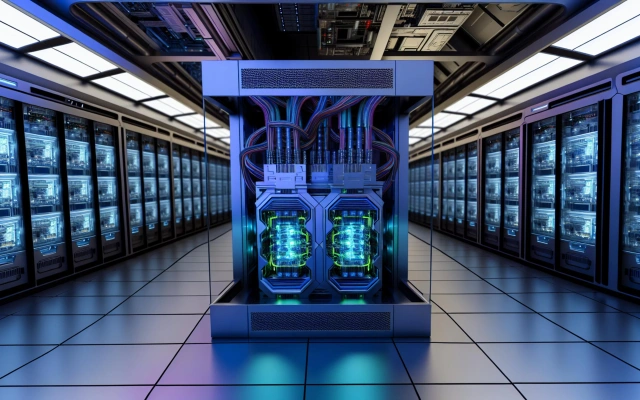How Studying The Brain Helps Build A Neuromorphic Supercomputer

How Studying The Brain Helps Build A Neuromorphic Supercomputer
Australian scientists are developing a supercomputer based on the principle of the human brain. Let's take a closer look at the project
What's the trend?
The human brain surpasses all existing computers in terms of computing power – it is capable of performing up to 100 billion operations per second. Since the 1980s, researchers have been trying to work within the framework of neuromorphic computing, the modeling of digital devices based on the structures and functions of the human brain. So far, none of the experiments have been successful, but the researchers are waiting for a technological breakthrough along with the implementation of the DeepSouth project.
How a Neuromorphic Computer Works
The DeepSouth project, which is being implemented at the International Centre for Neuromorphic Systems at the University of Western Sydney in Australia, will become available in April 2024. It will be able to perform 228 trillion actions per second, 2,000 times more than the brain.
So far, the details of the project are unknown: the DeepSouth team is keeping aspects of it secret. However, based on previous research, it is possible to speculate what exactly will be in the supercomputer. Domenico Vicinanza, Associate Professor of Intelligent Systems at Anglia Ruskin University, explains: "DeepSouth is also inspired by the human brain. Its uniqueness lies in the fact that it approaches computing differently compared to gadgets. In them, the power is concentrated in one place and the memory is in another."
Due to the separation of memory and processing power in conventional computers, smartphones, and tablets, there are many switches that consume a huge amount of energy. To solve this problem, the researchers looked at a way to connect the systems in a similar way to the brain. Domenico Vicinanza adds: "The brain has such power that every neuron and synapse is a small piece of computation and memory. These trillions of points can connect and reconfigure at any time. Because of this, energy is saved."
Why do we need new supercomputers?
By improving the energy efficiency of computing, researchers will hypothetically be able to make batteries radically more capacious. Smartphones will work not for one day, but for a whole week on a single charge. It will also be possible to significantly reduce the size of the most powerful computers.
Thanks to this technological advancement, personal devices will be better able to cope with the tasks at hand. You'll be able to run advanced programs like antiviruses in the background without being noticeable in terms of performance, or just open hundreds of tabs without much lag.
What else can DeepSouth do?
Neuromorphic computing allows us to better understand aspects of the formation of dementia, Alzheimer's and Parkinson's diseases. Domenico Vicinanza notes: "By reproducing the most complex network of brain blocks, scientists will be able to understand the dynamics of the development of certain diseases. It will also become clear how our main organ develops with age or even responds to drugs."
In this context, diseases can be thought of as a virus that infects a computer. To deal with it, you need to find the original cause. Accordingly, by digitizing the brain, scientists will be able to understand how neurons transform signals and how they "communicate" with each other, as well as what can lead to malfunctions in their work.
- Arts
- Business
- Computers
- Παιχνίδια
- Health
- Κεντρική Σελίδα
- Kids and Teens
- Money
- News
- Recreation
- Reference
- Regional
- Science
- Shopping
- Society
- Sports
- Бизнес
- Деньги
- Дом
- Досуг
- Здоровье
- Игры
- Искусство
- Источники информации
- Компьютеры
- Наука
- Новости и СМИ
- Общество
- Покупки
- Спорт
- Страны и регионы
- World


